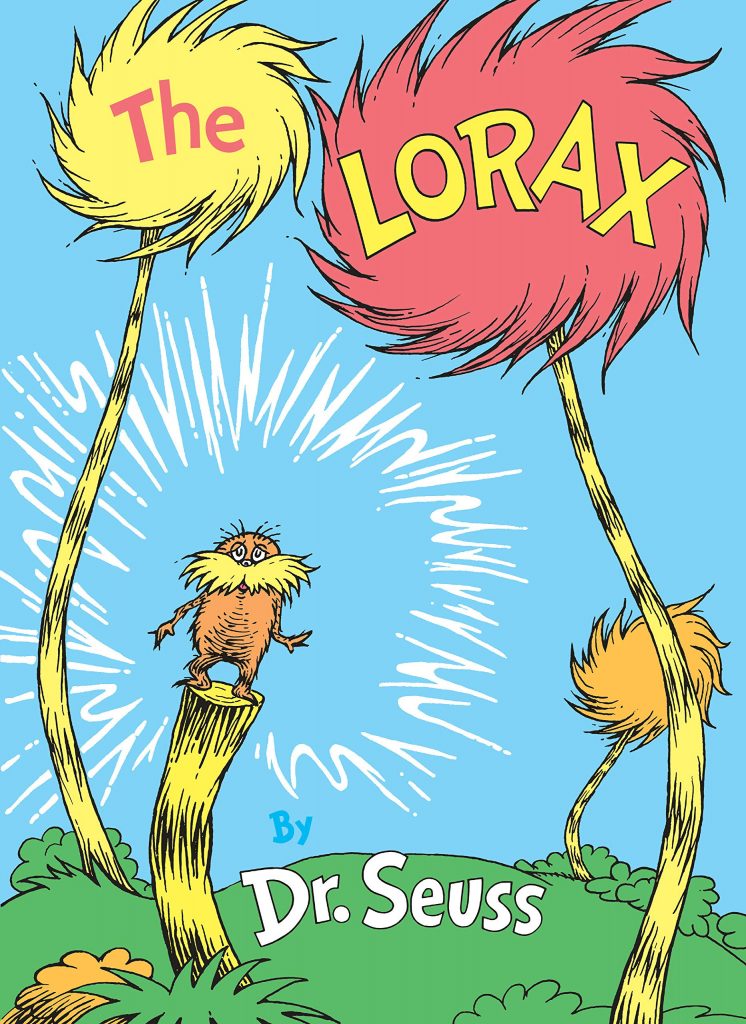The Lorax: Book & Movie
Alex Kowal ’14 // Blog Writer
I think The Lorax is a cool book.
The movie might be worth a look.
The Lorax is also its name;
It’s different but still the same.
The Lorax, which opened in theaters March 2nd, is the tale of a world destroyed by consumerist greed. Based on Dr. Seuss’ book of the same name, the movie goes into more detail than the short book ever could. Seuss’ world is expanded onscreen as the movie builds off the colorful illustrations in his book for its aesthetics. For example, the unnamed city of the book is given life and dubbed Thneedville. It is portrayed as a colorful plastic place where the “trees” are inflatable, light up, and work as disco balls too. The imagined city, based off the buildings on the first page of the book, fits with Seuss’ whimsical illustrations even though it was never explicitly described. However, the Lorax, Humming-Fish, and bearlike Bar-ba-loots all look like they jumped right off the page. The beautiful Truffula Valley appears almost exactly how Seuss portrays it in his book. While the movie’s animation imitates the book’s pictures fairly well, the plot is expanded and altered in order to extend the story into a feature film.
One of the main ways the book was adapted was to add in subplots and develop the characters. For example, Dr. Seuss addresses the reader in his book, but the movie has an actual character. The boy in the red-striped ensemble from Seuss’ illustrations becomes young protagonist Ted. Other additions to the story include love-interest Audrey, bad guy O’Hare, and Ted’s crazy mom and grandmother. The Once-ler’s family, while only making a brief appearance in the book, becomes individualized and developed – we’re treated to a greedy aunt, uncle, and cousins along with a doubting mother. The Once-ler gets a detailed backstory, which explains his motivations for making Thneeds. The tale of how he destroyed all the trees is embellished and features the Lorax’s attempts to get rid of him, along with their burgeoning friendship. This relationship is not explored in the book at all. In another deviation, the Once-ler gives the Lorax his word that he will not to chop down any more trees. But of course he breaks his promise.
According to the production notes from the official movie website, the movie team tried “to flesh out the book’s characters and create a complementary world” in order to “craft a feature production that would draw audiences further into its story” by filling in “what happened before the book began and after it ended.” This technique of fleshing out characters and building off of the given plot is generally used to make short books into longer movies. The Lorax, following the great tradition of books into movies, maintains Dr. Seuss’ whimsical vibe while expanding upon his classic story.

